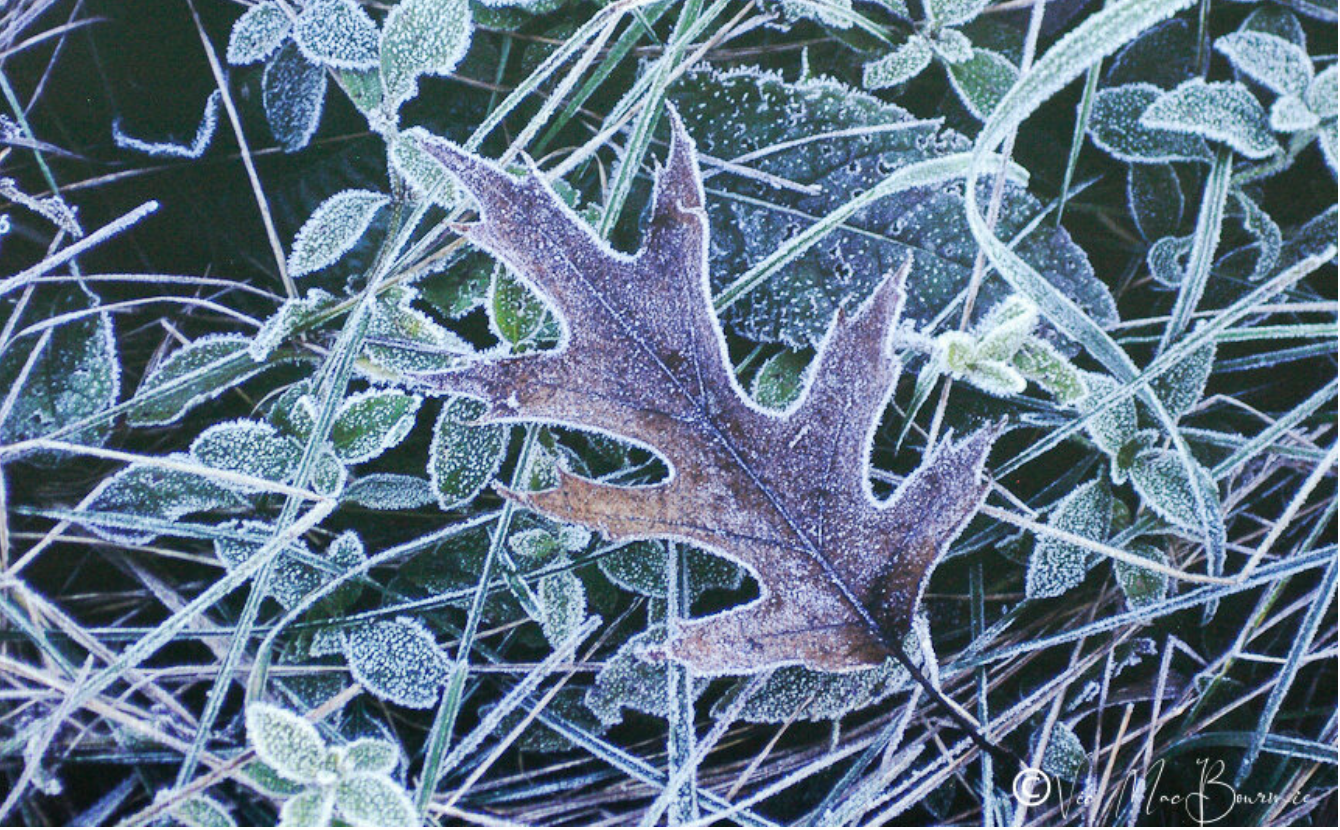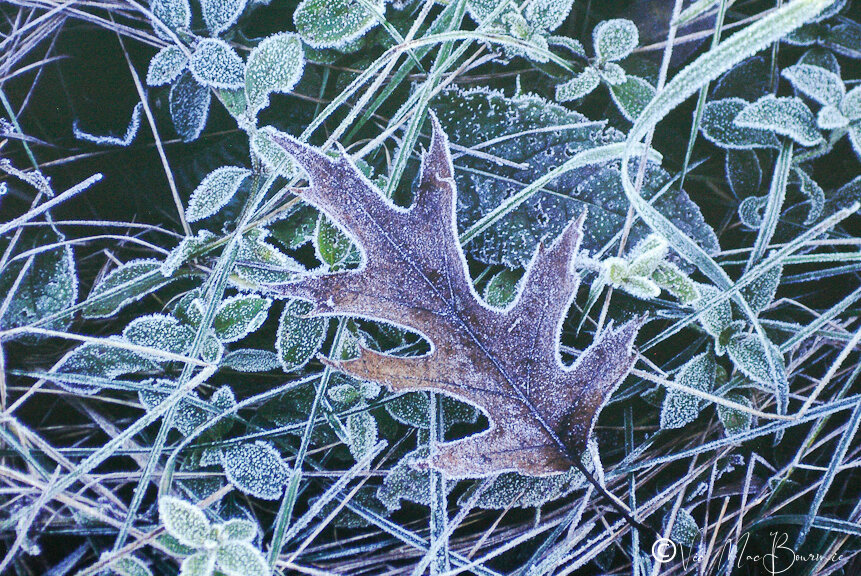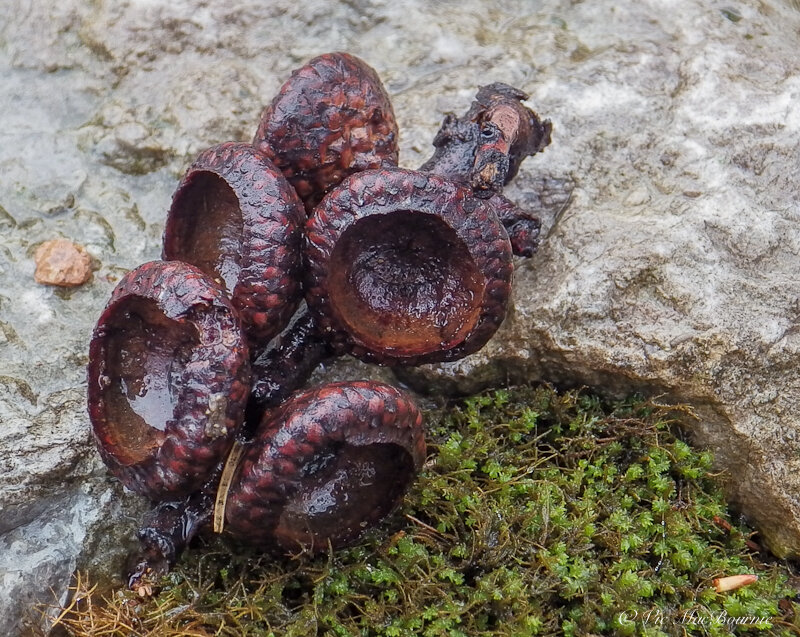What tree should I plant in my backyard?
What tree should I plant in my garden? A question heard often in on-line forums and nurseries everywhere. The simple answer: Plant an oak tree. Its everything you want in a tree – solid, stately and it feeds, protects and is home to more forest creatures than any other tree you could plant. There is room in every garden design for an oak, and if you think there isn’t think again. Here are four great oaks to consider.
Four oak trees for your woodland wildlife garden
“We just bought our first house and we want to plant a tree. What’s the best tree to plant?”
It’s a question seen over and over again on gardening forums and one asked at local nurseries on a daily basis.
On Facebook gardening forums, the question is often immediately followed by a host of suggestions from well-meaning gardeners and homeowners offering up ideas ranging from tiny weeping hybrids to non-native, highly invasive trees.
Rarely does the word Oak tree show up.
Let me go on record to say that the best tree you can plant in your backyard woodland wildlife garden is an Oak. There are plenty of reasons to plant one of the 400 species of oak, but nothing is as important as one simple fact: Oaks support the most insect biodiversity of any tree in the woodland.
I remember when we moved into our current home. One of the first things I did in spring was to do an inventory of trees on the property. I was very happy to see a nice young oak tree growing happily in the back of the yard. Today it is a more mature oak that works hard for the birds and wildlife on our property.
If you are interested in exploring the world of shade gardening further, you might like my recent post on The Natural Shade garden.
An oak leaf covered in hoar frost in late fall.
Oaks are good for birds and wildlife
In his book Bringing Nature Home, Douglas Tallamy explains that a 2003 study found that a “single white oak tree can provide food and shelter for as many as 22 species of tiny leaf-tying and leaf folding caterpillars.” And that is just a tiny fraction of the fauna that depend on a single oak tree. In fact, the mighty oak supports 534 species of fauna, more than any other tree we can plant in our gardens.
It is followed by the willows, cherries and plums, in importance to fauna. All good choices when it comes to deciding what tree to plant in your garden.
If the Oak’s importance to wildlife is not enough, consider that of the 400 species of Oak, North America boasts 90 different species with 75-80 in the United States and 10 in Canada.
For more on the importance of oak trees in our garden and natural landscapes take a few moments to check out my other posts on Oak trees:
Oaks are long-lived trees
Oh, and no need to worry that the tree will die on you and leave a massive hole in the landscape, Oak trees traditionally live for hundreds of years. There’s a good chance your children will be watching the tree enter middle age long after you’re gone.
In Ontario and northeastern United States, that white oak you plant will grow more than 35 metres (that’s more than 114 feet) tall, can live for several hundred years and produce thousands of acorns every year to feed deer, squirrels (including flying, red and gray), chipmunks, wild turkeys, crows, rabbits, bears, mice, opossums, blue jays, quail, raccoons and even wood ducks just to name a few.
As Tallamy points out: “The value of oaks for supporting both vertebrate and invertebrate wildlife cannot be overstated.”
He explains that oaks along with hickories, walnuts and American beech, have stepped up to the plate following the demise of the American chestnut in supplying nut forage for various forms of fauna.
“Every oak tree started out as a couple of nuts who stood their ground.”
In addition, oaks – both living and dead – provide nesting cavities for our backyard birds ranging from chickadees, wrens, woodpeckers, owls and even bluebirds.
The tree species real genius, however, is what we alluded to earlier, and that is the astounding number of insect herbivores that oaks support in the forest ecosystem.
“From this perspective, oaks are the quinessential wildlife plants: no other plant genus supports more species of Lepidoptera, thus providing more types of bird food, than the mighty oak,” Tallamy writes.
(If you are wondering what the heck a Lepidoptera is: They represent an order of about 180,000 species in 126 families and 46 superfamilies of insects that includes butterflies and moths. It is one of the most widespread and widely recognizable insect order in the world, and your average oak is full of them.)
12 Cool facts about Oak trees
1) Not all acorns are created equally. Acorns produced by white oaks germinate just days after they fall from the trees. Acorns produced by red oak species germinate the following spring. Keep this in mind if you are trying to grow your woodland from seeds. It is estimated that only 1 in 10,000 acorns become trees.
Acorn hats after squirrels feasted on the fruit of the oak.
2) An oak tree produces about 2,000 acorns every year. These acorns contain plenty of nutrition including large amounts of protein, carbs, fats, phosphorus, potassium, calcium and niacin.
3) The root system of a mature oak tree can total hundreds of miles and its taproot grows vertically for some distance before branching out. This helps to stabilize the massive trees from wind, rain and hurricanes. Although most oak tree roots lie only 18 inches under the soil, depending on conditions, they may spread to occupy a space four to seven times the width of the tree’s massive crown. A good thing to keep in mind if you are planning any major digs or trenching in the area of your favourite oak tree.
4) Walking sticks and katydids mature on oak foliage, so if you have never seen a walking stick, plant an oak.
5) Oak trees appeared about 65 million years ago. They have a long history with records reporting back to the late Cretaceous deposits in North America and East Asia. Their survival might be attributed, in part, to the fact acorns and oak leaves contain tannic acid which helps protect them from deadly fungi and destructive insects
6) Some oak trees are not considered old until they hit the ripe age of 700 years. In fact, they can keep going until they hit 1,000 when growth begins slowing down. On average, however, a typical oak tree lives to be about 200 years of age.
7) During their long lives, an oak tree can produce 10 million acorns.
8) The largest living oak is said to be located in Mandeville, Louisiana. Its also considered one of the oldest clocking in at an estimated 1,500 years old
9) There are more than a few famous oaks in history beginning with the Emancipation Oak on the campus of Hampton University in Virginia which is designated one of the 10 Great trees of the world. The sprawling oak is 98 feet in diameter. In the 1860s, Mary Smith Peake broke the law when she taught African American adults and children how to read under the oaks’ branches.
10) The oak is the national tree of the United States.
11) Oak trees may be known by many in Canada and the U.S. as deciduous trees but, in fact, they can also be evergreen in warmer climates with mild winters.
12) Red Oaks are tough trees and can grow in hardiness zones from 2a through to 8b.
The perfect tree?
Sounds perfect, right? Hold on, there’s even more.
In your lifetime, the tree you plant will actually grow into an outstanding specimen that will have a dramatic impact on your landscape design. It will help to form the upper canopy of your woodland garden and you won’t have to wait until your golden years before you begin appreciating its presence in your landscape.
Its sheer size will help to block out the annoying neighbours and the rustle of its leaves will help to drown out the noise of the neighbourhood.
Too big for your yard?
‘The oaks are a large tree,’ you say. ‘Too big for my typical suburban yard.’
I say go big or go home.
Oaks are not “fast-growing” trees, but because of their eventual size they grow at a good pace. I’m guessing a pin oak planted in your late 20s or early 40s won’t outgrow most yards in your lifetime or the home’s second owners, if ever.
They grow big and strong and their roots run deep enough to give them good stability as they age. All these traits mean that you will not have to wait 40 years for the tree in your backyard to make a real difference in your landscape.
There’s plenty of time to plant smaller, understory trees for your woodland.
Today, we are going big and beautiful. Don’t think about how large the tree will eventually become 50-75-100 years down the road, think 10-20-30 years instead. Most oaks make beautiful specimen trees, but if you have room to plant a few, they make a wonderful canopy cover for woodland gardens.
But, let’s face it, not everyone wants or has room for a mighty oak in their yards, especially in many of today’s smaller urban yards.
I get it. The tree you eventually decide to plant in your yard is a major decision that you will have to live with it for a long time.
Let’s zero in on those Oaks you might want to consider for your yard.
Most oaks fall into two groups: those that derive from the white oak group and those from the red oak.
It’s no surprise that all will do well in rich well-drained soil. That’s the dream world where most of us gardeners don’t live. So, if you have an area in the garden with moist soils, consider planting a pin oak and swamp white oaks. Got dry thin soils? Look to chestnut oaks, white oaks and scarlet oaks.
A local, highly reputable nursery in my area lists 13 oak trees for sale on its web site. The following is just an example of four types of Oaks (with links to the nursery website) that are available to homeowners. Check out a full listings of offerings here.
Four oak trees for the woodland wildlife garden
The White Oak (Quercus alba) is there in all its stately presence. Listed as a “massive and stately shade tree growing 90 feet tall and 70 feet wide with an artistic, wide-spreading habit of growth and good fall colour.” It’s recommended “only for the largest of landscapes” and described as “extremely tough” but slow growing. Its fall colour is an outstanding purple, its canopy is dense with a more or less rounded form.
The Pin Oak (Quercus Palustris) is certainly a better choice for a typical front or backyard growing to 60 feet tall with a spread of 40 feet. It’s a more popular tree in our neighbourhood with its refined pyramidal shape, excellent fall colour and growth that cannot be described as “fast” by today’s standards but nevertheless fast for an oak tree. Often referred to as the swamp Oak, the tree’s dark green leaves in summer provide outstanding red fall foliage. The tree requires loose, acidic soil to perform its best.
The Crimson Spire Oak (quercus ‘Crimson Spire’) is one of several cultivars that offer many of the benefits of the Oak but in a more compact form with an eventual height of 50 feet and a spread of a mere 15 feet. The narrow columnar growth habit and deep red fall colour is ideal for screening out undesireable views while helping out local fauna. The tree’s canopy is very low (typically only three feet from the ground) meaning it does not work as an upper canopy tree in a woodland garden, but its usefulness as a screen and its compact size makes it an important consideration for anyone looking to enhance their garden’s attraction to wildlife. It enjoys full sunlight, is adaptable to both dry and moist locations and, unlike the Pin Oak, is happy in any soil type or pH level. It will do well in an urban environment and is said to even thrive in inner city city environments.
The Bur Oak (Quercus macrcarpa) is the hardiest of the oaks with a height and spread of about 80 feet and a hardiness zone going down to as low as zone 2b. This stately slow grower, with a more rounded form is best for large landscapes. Its tall canopy, ideal for a large woodland landscape design, has dark green foliage and sports glossy lobed leaves that turn coppery-bronze in fall. It’s a slow grower that needs full sun but can live more than 300 years. It will grow in most soils and is considered drought-tolerant once established.
Eastern Mixed Forests: A home for the oaks
Using nature as a guide to draw inspiration for our own landscapes, we need only look at the Eastern Mixed Forests to understand where the mighty oaks are most at home. This region, which includes the forested areas from the Atlantic Coast westward to the Prairie and north to the Great Lakes region, includes several distinct forest types, including the Carolinian forest zone, each characterized by a diffrent group of tree species. The Eastern Mixed forest region occurs east of the Appalachian Mountain ranges and include trees such as the tulip poplar, white and red oaks, American beech and flowering dogwood.
Oak woodlands in the southwest
In the semi-arid regions in the west and southwest, for example, Oak woodlands can be one of the dominant plant communites. The woodlands form transitions zones between the coniferours forests of the higher, more moist areas and the drier grasslands or deserts. They differ from other forests because of their drought-tolerant species such as the oaks, pines, and junipers that dominate the woodlands. Oaks cover the foothills of southern California and the lower mountains of Arizona and New Mexico, while pines and junipers dominate in the areas around the Great Basin, lower rockies and parts of southwestern Texas. These areas experience hot, dry summers and cool, moist winters. Fires are important to maintaining and restoring these oak woodlands.
The final decision
Back to that original question of what tree to plant in your yard. Trying to decide what tree that should be is never easy. If you decide to purchase a large tree, that requires special delivery and planting, it can also be an expensive decision.
For budgetary reason, I always suggest to keep the tree small enough to carry home and plant on your own, but there are situations when a large tree is necessary.
The first thought of many new homeowners is that they don’t want to plant a tree that will eventually outgrow their backyard, yet they love going to a friend’s or relative’s homes where a single large tree forms the backbone of the entire yard. A swing hangs from one of the branches, a couple of chairs under the canopy provide the perfect relief from the hot sun.
Maybe you grew up with a favourite climbing tree that provided hours of enjoyment every summer for you and your friends.
The move these days is to plant small trees with fancy hybridized names and sterile flowers that provide no benefit to wildlife of any kind. I’ll grant you some are cute and have a place in patio containers or near your front entrance, but it’s always a good idea to step out of your comfort zone and go big.
Interior designers beg homeowners not to settle for small furnishings and art work just because they live in a condo or small apartment. There are times to think big.
And, I believe that every yard needs one large tree if possible. And, there is no better choice than the mighty oak.
The birds will thank you. The squirrels, chipmunks, deer and rabbits will reward you. And the earth will give back to you one hundred times over.
Now go plant an oak tree.
Important links for Woodland/Wildlife gardeners
The following is a comprehensive list of links to other articles posted on this website.
• Creating a Woodland/Wildlife garden: How small can a woodland garden be. Link
• Creating a Woodland/Wildlife garden: A complete design plan and planting guide. Link
• Chelsea Award winning garden designer Mary Reynolds. See my earlier post about her book here. Go to Mary’s popular website here where she promotes land stewards to create natural Arks to help protect and restore our natural environments.
• Earlier post on Garden mulch: organic vs non-organic. Link here to my earlier post.
• Earlier post to my favourite ground covers for the woodland garden. Link here to my earlier post
• Earlier post on using a local woodland as inspiration for the woodland garden design. Link here to my earlier post.
As an affiliate marketer with Amazon or other marketing companies, I earn money from qualifying purchases.



